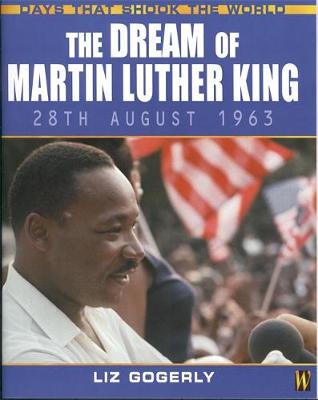Days That Shook the Worl
3 total works
This book describes the significant role that Martin Luther King played in the Civil Rights Movement in 1960s America and the legacy of his struggle for equal rights for black Americans. It looks at the lead up to his famous "I have a dream" speech, when he described his dream of black and white people co-existing in racial harmony. It then dramatically describes the day it took place, during the March on Washington on 28 August 1963, and continues with King's story until his assassination in 1968. The book finishes by looking at what aspects of King's dream have come true in the early 21st century. Moment-in-time boxes, describing eye-witness accounts, give a sense of drama and immediacy to the book.
This book looks at the moment Nelson Mandela was freed from prison after 27 years - a moment which had symbolic significance as the end to apartheid. The book explains the background to how and why Mandela became a political prisoner for so long and then goes on to look at the changes that went on in South Africa to make his release possible. It then goes on to examine the reactions of the rest of the world and whether Mandela succeeded in living up to the expectations of those people who had dreamed of his release for so long.
This title explores the background and the aftermath of the assassination of Kennedy, using this single event as a window on to a broader perspective of twentieth century history. It looks at Kennedy's impact as a US president through crucial events in history such as the Cuban Missile Crisis, building up to the climatic assassination itself. It then explores how and why Kennedy was assassinated and tantalizingly asks 'What if it hadn't happened?' Throughout the book 'moment in time' panels which use quotes and primary sources give the reader an impression of what it must have been like to be there. The final part of the book examines the legacy of the 'day that shook the world' in terms of its impact on history.


